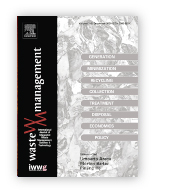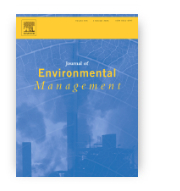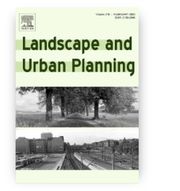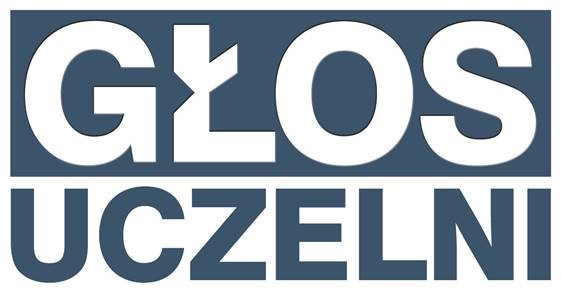
Research papers of the month – May 2024
We present the highest-score research papers of May 2024. These papers have ben published in journals with the highest Ministerial score – 200 points.
Isolation and identification of carbon monoxide producing microorganisms from compost
Karolina Sobieraj; Daria Derkacz; Anna Krasowska; Andrzej Białowiec
Waste Management
Ministerial score = 200.0
Journal Impact Factor (2023) = 8.1 (Q1)
 Carbon monoxide (CO) formation has been observed during composting of various fractions of organic waste. It was reported that this production can be biotic, associated with the activity of microorganisms. However, there are no sources considering the microbial communities producing CO production in compost. This preliminary research aimed to isolate and identify microorganisms potentially responsible for the CO production in compost collected from two areas of the biowaste pile: with low (118 ppm) and high CO concentration (785 ppm). Study proved that all isolates were bacterial strains with the majority of rod-shaped Gram-positive bacteria. Both places can be inhabited by the same bacterial strains, e.g. Bacillus licheniformis and Paenibacillus lactis. The most common were Bacillus (B. licheniformis, B. haynesii, B. paralicheniformis, and B. thermolactis). After incubation of isolates in sealed bioreactors for 4 days, the highest CO levels in the headspace were recorded for B. paralicheniformis (>1000 ppm), B. licheniformis (>800 ppm), and G. thermodenitrificans (∼600 ppm). High CO concentrations were accompanied by low O2 (<6%) and high CO2 levels (>8%). It is recommended to analyze the expression of the gene encoding CODH to confirm or exclude the ability of the identified strains to convert CO2 to CO.
Carbon monoxide (CO) formation has been observed during composting of various fractions of organic waste. It was reported that this production can be biotic, associated with the activity of microorganisms. However, there are no sources considering the microbial communities producing CO production in compost. This preliminary research aimed to isolate and identify microorganisms potentially responsible for the CO production in compost collected from two areas of the biowaste pile: with low (118 ppm) and high CO concentration (785 ppm). Study proved that all isolates were bacterial strains with the majority of rod-shaped Gram-positive bacteria. Both places can be inhabited by the same bacterial strains, e.g. Bacillus licheniformis and Paenibacillus lactis. The most common were Bacillus (B. licheniformis, B. haynesii, B. paralicheniformis, and B. thermolactis). After incubation of isolates in sealed bioreactors for 4 days, the highest CO levels in the headspace were recorded for B. paralicheniformis (>1000 ppm), B. licheniformis (>800 ppm), and G. thermodenitrificans (∼600 ppm). High CO concentrations were accompanied by low O2 (<6%) and high CO2 levels (>8%). It is recommended to analyze the expression of the gene encoding CODH to confirm or exclude the ability of the identified strains to convert CO2 to CO.
DOI:10.1016/j.wasman.2024.04.044
Enhancing migratory potential in fish passes: The role of pier shape in minimizing debris accumulation
Jan Błotnicki; Maciej Gruszczyński; Robert Głowski; Marian Mokwa
Journal of Environmental Management
Ministerial score = 200.0
Journal Impact Factor (2023) = 8.7 (Q1)
 Biodiversity preservation is a primary challenge of the 21st century, focusing on restoring unobstructed river flows and mitigating the effects of barriers, supported by European biodiversity strategies up to 2030. Maintaining ecological continuity, such as unblocking fishways clogged by floating debris disrupting natural fish migration paths, remains a challenge despite conventional protective methods. This study, taking a vertical slot fish pass in Wrocław on the Odra River as a case study and based on research on bridge piers, suggests modifying pier shapes from rectangular to rounded in order to reduce debris accumulation. Field studies, utilizing an OTT MF Pro flow meter, were conducted to validate the numerical model. The measured flow rate in the field was 3.15 [m³·s−1], while the numerical modeling yielded a flow of 3.19 [m³·s−1]. Focusing on optimizing the shape of cross-wall piers to enhance fish migration conditions, the study examined six different pier configurations, analyzing flow speed in the main slot, crucial for migration. Using 2D hydraulic modeling with Iber, it assessed the migratory potential of different pier designs by analyzing hydraulic conditions and comparing them with the swimming capabilities of fish species native to the Odra River. Results indicate that rounding the pier edges positively affects flow speeds in the main slot, enhancing fish migration possibilities, contributing to fish pass functionality improvement and supporting broader biodiversity and ecosystem health goals.
Biodiversity preservation is a primary challenge of the 21st century, focusing on restoring unobstructed river flows and mitigating the effects of barriers, supported by European biodiversity strategies up to 2030. Maintaining ecological continuity, such as unblocking fishways clogged by floating debris disrupting natural fish migration paths, remains a challenge despite conventional protective methods. This study, taking a vertical slot fish pass in Wrocław on the Odra River as a case study and based on research on bridge piers, suggests modifying pier shapes from rectangular to rounded in order to reduce debris accumulation. Field studies, utilizing an OTT MF Pro flow meter, were conducted to validate the numerical model. The measured flow rate in the field was 3.15 [m³·s−1], while the numerical modeling yielded a flow of 3.19 [m³·s−1]. Focusing on optimizing the shape of cross-wall piers to enhance fish migration conditions, the study examined six different pier configurations, analyzing flow speed in the main slot, crucial for migration. Using 2D hydraulic modeling with Iber, it assessed the migratory potential of different pier designs by analyzing hydraulic conditions and comparing them with the swimming capabilities of fish species native to the Odra River. Results indicate that rounding the pier edges positively affects flow speeds in the main slot, enhancing fish migration possibilities, contributing to fish pass functionality improvement and supporting broader biodiversity and ecosystem health goals.
DOI:10.1016/j.jenvman.2024.121053
Measuring spatial inequality of urban park accessibility and utilisation: A case study of public housing developments in Auckland, New Zealand
Jessie Colbert; I-Ting Chuang; Katarzyna Siła-Nowicka
Landscape and Urban Planning
Ministerial score = 200.0
Journal Impact Factor (2023) = 9.1 (Q1)
 Poor spatial accessibility of urban green spaces affects disadvantaged populations, who are at greater risk of socioeconomic related health inequalities. We analyse mobile phone locational data from the Auckland Region of New Zealand to connect a user's 'home' location to nearby urban parks, specifically focusing on public housing tenants - a highly vulnerable group at greater risk of health inequalities. We use a number of traditional accessibility measures and four new park utilisation analyses to explore the relationship between accessibility to urban parks, neighbourhood area deprivation, and user's patterns of actual park usage. We develop four new metrics to assist in understanding the actual utilisation of green spaces available to residents: distance between closest park available and visited (DAT), used park opportunities (UPO), locality of park visits (LPV), and nearest park visitation rate (NPVR). We found that neighbourhoods with the most public housing tend to have a lower number of parks accessible, and those that are accessible are smaller in size. Additionally, people living in these areas tend to travel farther to access urban parks compared to areas with no public housing. More deprived neighbourhoods were revealed to have lower accessibility to urban greens in Auckland, highlighting the urgency to address the emerging divisions in accessibility and opportunities for these neighbourhoods. Our findings have important implications for policy-makers and urban planners. Furthermore, the use of mobile phone locational data can reveal insights into the mobility behaviour of users and can be applied to other locations and population groups.
Poor spatial accessibility of urban green spaces affects disadvantaged populations, who are at greater risk of socioeconomic related health inequalities. We analyse mobile phone locational data from the Auckland Region of New Zealand to connect a user's 'home' location to nearby urban parks, specifically focusing on public housing tenants - a highly vulnerable group at greater risk of health inequalities. We use a number of traditional accessibility measures and four new park utilisation analyses to explore the relationship between accessibility to urban parks, neighbourhood area deprivation, and user's patterns of actual park usage. We develop four new metrics to assist in understanding the actual utilisation of green spaces available to residents: distance between closest park available and visited (DAT), used park opportunities (UPO), locality of park visits (LPV), and nearest park visitation rate (NPVR). We found that neighbourhoods with the most public housing tend to have a lower number of parks accessible, and those that are accessible are smaller in size. Additionally, people living in these areas tend to travel farther to access urban parks compared to areas with no public housing. More deprived neighbourhoods were revealed to have lower accessibility to urban greens in Auckland, highlighting the urgency to address the emerging divisions in accessibility and opportunities for these neighbourhoods. Our findings have important implications for policy-makers and urban planners. Furthermore, the use of mobile phone locational data can reveal insights into the mobility behaviour of users and can be applied to other locations and population groups.
DOI:10.1016/j.landurbplan.2024.105070
Park lighting after dark – is it a route or a place? How people feel in park nightscapes (experiment)
Aleksandra Lis; Magdalena Zienowicz; Zygmunt Kąck; Paweł Iwankowski; Dorota Kukowska; Vlada Shestak
Landscape and Urban Planning
Ministerial score = 200.0
Journal Impact Factor (2023) = 9.1 (Q1)
 The objective of our study was to verify: (1) whether adding ambient lighting in addition to path lighting has a positive impact on preferences, sense of safety and related feelings experienced by park visitors after dusk (H1) and whether this impact is differentiated by the features of the space (H2); (2) what features of the park space may influence the feelings tested (RQ1). For this purpose, we conducted an experiment in the Botanical Garden in Wrocław, where 114 study participants – randomly divided into two groups (experimental and control) – assessed nightscapes based on 13 variables (feelings). The experimental factor was the addition of ambient lighting (in addition to path lighting also present for the control group). The experiment was based on assessments made in three different places in the park – an open space, semi-open space and non-closed space. Thanks to this, we were able to check whether the features of the space differentiate the effects of the experimental factor and then consider their impact on people's feelings. The research found that the impact of the experimental factor (ambient light) is not obvious – it was only apparent in some cases. This factor increased preference for corridor landscapes (semi-open and semi-closed space), but lowered preference in the open landscape. The experimental factor had the strongest effects in the semi-closed, least lit space, and enhanced preferences, surprise and fascination. Moreover, comparison of the ratings of these three places showed that some spaces were rated as the safest while others were assessed as the most attractive. The safest turned out to be the semi-open space with typical park lighting, with the highest path illumination intensity, whereas the least safe was the semi-closed space with the least lighting. When it came to most of the other dimensions related to attractiveness and desire to stay in the area (mystery, contact with the surroundings, willingness to spend time there, surprise, fascination and contemplation), the place with an open view, visually attractive landscape and subtle linear point lighting was rated the highest. The remaining spaces were rated lower. The findings of the experiment indicate that (1) adding light does not always increase preference for a particular space – sometimes it lowers it, thus indicating the benefits of darkness and natural night light in park landscapes; (2) there are differences between the features of safe nightscapes and attractive and leisurely landscapes.
The objective of our study was to verify: (1) whether adding ambient lighting in addition to path lighting has a positive impact on preferences, sense of safety and related feelings experienced by park visitors after dusk (H1) and whether this impact is differentiated by the features of the space (H2); (2) what features of the park space may influence the feelings tested (RQ1). For this purpose, we conducted an experiment in the Botanical Garden in Wrocław, where 114 study participants – randomly divided into two groups (experimental and control) – assessed nightscapes based on 13 variables (feelings). The experimental factor was the addition of ambient lighting (in addition to path lighting also present for the control group). The experiment was based on assessments made in three different places in the park – an open space, semi-open space and non-closed space. Thanks to this, we were able to check whether the features of the space differentiate the effects of the experimental factor and then consider their impact on people's feelings. The research found that the impact of the experimental factor (ambient light) is not obvious – it was only apparent in some cases. This factor increased preference for corridor landscapes (semi-open and semi-closed space), but lowered preference in the open landscape. The experimental factor had the strongest effects in the semi-closed, least lit space, and enhanced preferences, surprise and fascination. Moreover, comparison of the ratings of these three places showed that some spaces were rated as the safest while others were assessed as the most attractive. The safest turned out to be the semi-open space with typical park lighting, with the highest path illumination intensity, whereas the least safe was the semi-closed space with the least lighting. When it came to most of the other dimensions related to attractiveness and desire to stay in the area (mystery, contact with the surroundings, willingness to spend time there, surprise, fascination and contemplation), the place with an open view, visually attractive landscape and subtle linear point lighting was rated the highest. The remaining spaces were rated lower. The findings of the experiment indicate that (1) adding light does not always increase preference for a particular space – sometimes it lowers it, thus indicating the benefits of darkness and natural night light in park landscapes; (2) there are differences between the features of safe nightscapes and attractive and leisurely landscapes.
DOI:10.1016/j.landurbplan.2024.105098










